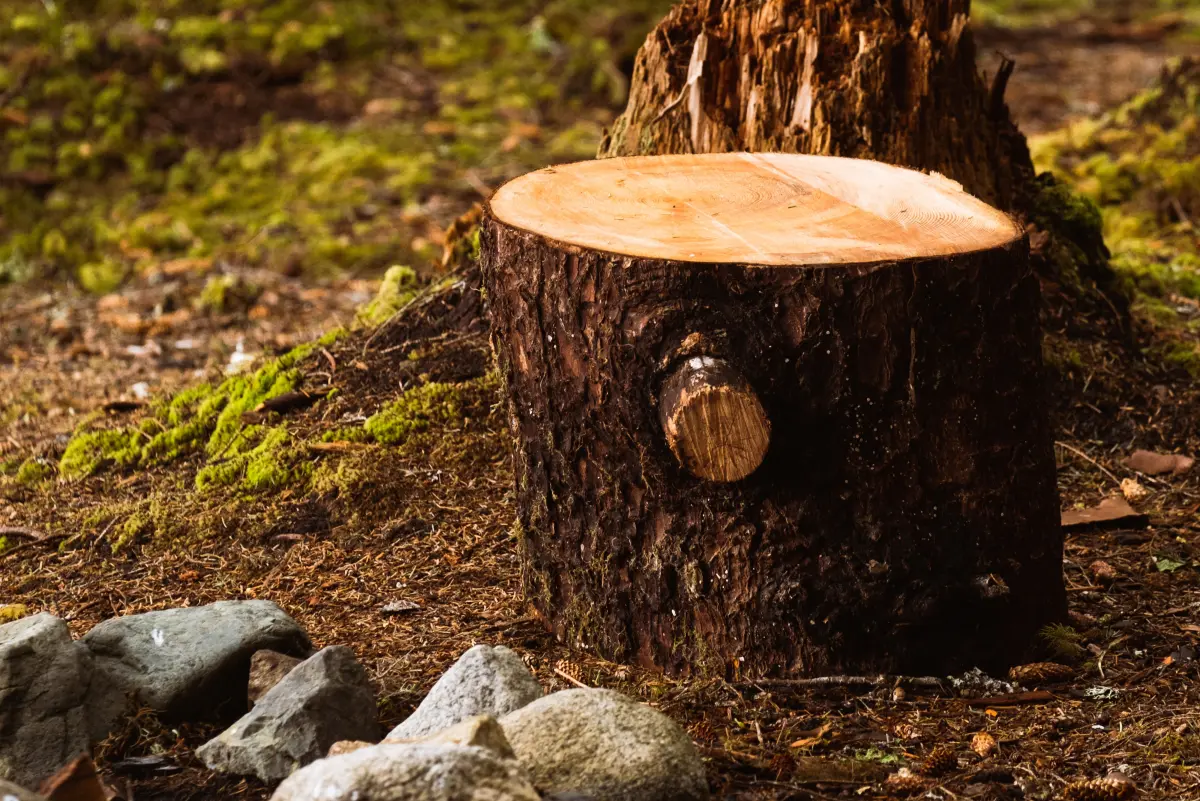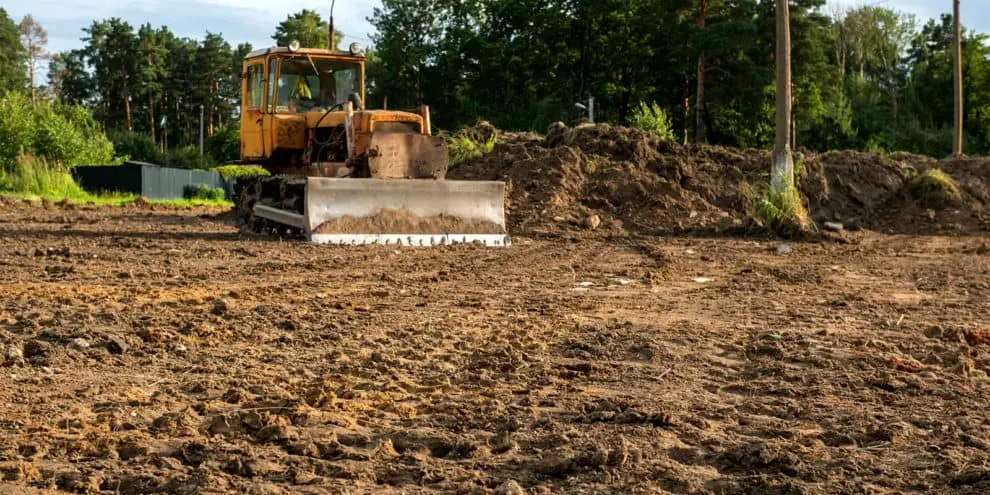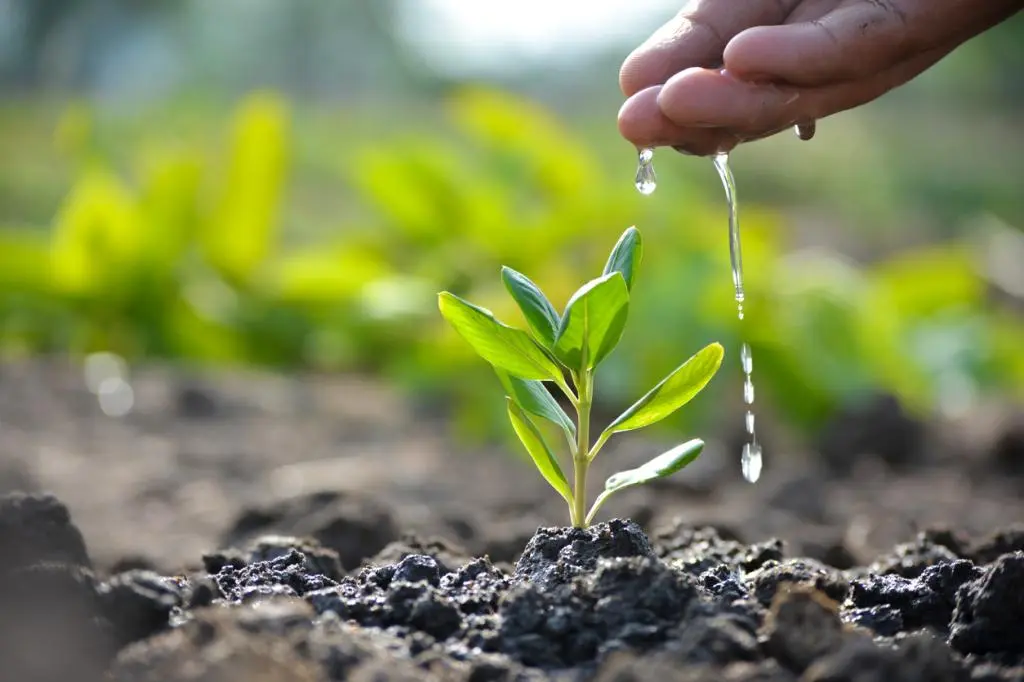Why you should not cut tree stump: Full Guide
Trees are vital for life on Earth. They provide oxygen, shade, and homes for many creatures. When trees die, they leave behind stumps. These stumps might seem useless, but they are essential to the ecosystem. Understanding the importance of trees and their stumps helps us appreciate and protect our environment.
Importance of Trees and Tree Stumps in Ecosystems
Trees are like the lungs of the Earth. They take in carbon dioxide and give out oxygen, which we need to breathe. Trees in forests create a relaxed, shady environment supporting diverse plant and animal life.
Tree stumps, the remains of fallen trees, are also essential. They decompose slowly, enriching the soil with nutrients, which helps new plants grow. Stumps also provide homes for insects, fungi, and small animals. They are like mini-ecosystems, supporting life even after the tree is gone.
Both trees and tree stumps are crucial for maintaining healthy ecosystems. Trees clean the air, provide food and shelter, and prevent soil erosion. Stumps contribute to soil health and provide habitat for various organisms. Protecting trees and understanding the role of tree stumps helps keep our ecosystems balanced and thriving.
Trees and their stumps are essential to the environment. By appreciating their roles, we can better protect our natural world. Remember, every tree and stump plays a part in keeping our planet healthy.
Environmental Impact
Role of Tree Stumps in Soil Health and Stability
Tree stumps play a crucial role in maintaining soil health. When a tree is cut down or dies, its stump remains. As it decomposes, it releases nutrients into the soil, helping new plants grow strong and healthy. The stump's roots also help hold the soil in place, making it more stable and less likely to wash away during heavy rains.
Contribution to Biodiversity and Habitat for Insects, Fungi, and Other Organisms
Tree stumps are mini-habitats full of life. Many insects, like beetles and ants, find shelter and food in stumps. Fungi grow on and inside the decaying wood, breaking it down further and returning essential nutrients to the soil. Small animals, like mice and birds, can also use stumps as homes or hiding places. This creates a diverse and lively ecosystem right in the remains of an old tree.
Effects on Erosion and Water Retention
Tree stumps also help manage water in an ecosystem. They help keep the ground moist, even during dry periods, keeping the land fertile and healthy for other plants to grow.
Tree stumps are more than just leftover wood. They improve soil health and stability, support many living creatures, and help manage water and prevent erosion. Understanding and protecting tree stumps can help maintain balanced and thriving ecosystems.
Economic Considerations
Cost of Stump Removal
Removing tree stumps can be expensive. Depending on the size and number of stumps, hiring professionals to do the job often costs hundreds of dollars. The process involves heavy machinery and can take several hours to complete. The cost can be even higher if the stumps are in hard-to-reach places. For homeowners and land managers, these costs can add up quickly, making stump removal a significant expense.
Alternative Uses for Tree Stumps
There are many creative and valuable alternatives to removing tree stumps. One option is to leave the stumps as they are to become wildlife habitats. Many insects, small animals, and fungi make their homes in tree stumps, contributing to the local ecosystem. This approach is not only environmentally friendly but also cost-effective.
Tree stumps can also be used as decorative features in gardens and parks. They can be carved into unique sculptures or used as natural seating. Gardeners often use stumps as planters, filling them with soil and flowers to create beautiful displays. These uses add charm and character to outdoor spaces, turning an old stump into a focal point rather than an eyesore.
While stump removal can be costly, many alternative uses for tree stumps are practical and economical. We can save money and benefit the environment by transforming stumps into wildlife habitats or decorative features. These creative solutions offer a way to make the most of what nature provides, turning a potential problem into an opportunity for beauty and biodiversity.
Aesthetic and Functional Benefits
Natural Beauty and Rustic Appeal of Tree Stumps in Landscaping
Tree stumps may bring natural beauty and rustic charm to any scene. Their distinct shapes and textures provide intriguing focal pieces in gardens and parks. Instead of seeing stumps as unsightly leftovers, consider them organic art pieces. They can blend seamlessly with plants and flowers, enhancing the overall look of outdoor spaces. The natural lines and weathered wood of stumps create a cozy, earthy feel that modern materials often can't match.
Use as Natural Seating or Decorative Elements in Gardens and Parks
Tree stumps are not just pretty; they can be instrumental, too. One widespread use is natural seating. In gardens or parks, stumps can be arranged to create rustic benches or individual seats. This practical use makes them great for spaces where people gather to relax and enjoy nature.
Stumps also make lovely decorative elements. They can be hollowed out and used as planters, filled with colorful flowers or succulents. Some people carve designs into stumps, turning them into unique sculptures. They can also be used as stands for bird baths, lanterns, or garden statues. These creative uses turn stumps into versatile features that enhance the beauty and functionality of any garden or park.
Tree stumps offer both aesthetic and functional benefits. Their natural beauty adds rustic appeal to landscaping, while their sturdy structure makes them perfect for seating and decoration. By incorporating tree stumps into garden and park designs, we can create charming, inviting spaces celebrating nature's artistry.
Safety Concerns
Hazards of Removing Tree Stumps Improperly
Removing tree stumps can be dangerous if not done correctly. Chainsaws, stump grinders, and other heavy machinery are potent tools that require skill to handle safely. Improper use can cause cuts, bruises, or more severe injuries. Stumps often have deep roots that can tangle with underground utilities, such as water pipes or electrical cables.
Stability Risks of Removing Stumps in Certain Landscapes
In some landscapes, removing tree stumps can create stability problems. For instance, stumps and their roots help hold the soil in place on slopes. Removing them can lead to soil erosion and landslides, making the area unsafe. In wetlands, tree stumps are crucial in maintaining the ecosystem's balance. They help support the soil and provide habitat for many species. Taking out stumps in these areas can disrupt the environment and cause instability.
When considering stump removal, it's essential to assess the landscape carefully. They have the expertise and equipment to handle tricky situations, such as steep slopes or avoiding underground utilities.
Despite its simplicity, removing tree stumps poses significant safety concerns. Improper removal can cause injuries and damage, and certain landscapes require careful consideration to avoid stability risks. Always approach stump removal cautiously and seek professional help to ensure safety and protect the environment.
Regulatory and Legal Considerations
Local Regulations Regarding Tree Removal and Stump Disposal
Before removing a tree or its stump, it's essential to know the local regulations. Many places have rules to protect trees, especially in urban areas or forests. You might need a permit to cut down a tree, even on its property. These rules help manage the environment and ensure tree removal is done responsibly. They often include guidelines on how to dispose of tree stumps properly. Some areas may require that stumps be ground down or removed entirely to prevent pests and diseases from spreading.
Potential Fines or Penalties for Unauthorized Stump Removal
Ignoring these regulations can have serious consequences. You could face hefty fines if you remove a tree or stump without the proper permits. In some places, unauthorized tree removal can lead to penalties of several hundred dollars per tree. Repeated offenses or removing protected trees can result in even higher fines or legal action. The goal of these penalties is to deter people from cutting down trees recklessly and to protect the environment.
Check with local authorities or a professional before removing a tree or stump. This ensures you comply with all regulations and avoid unnecessary penalties. It also helps you understand the best practices for removing trees and stumps and protecting your property and the environment.
Understanding and following local regulations for tree removal and stump disposal is crucial. Unauthorized removal can lead to significant fines and legal trouble. Complying with these rules helps preserve the environment and avoid costly penalties. Always seek the proper permits and professional advice to ensure a smooth and legal removal process.
Alternative Solutions
Stump Grinding as a Less Invasive Method of Stump Removal
Stump grinding is an effective and less invasive way to deal with unwanted tree stumps. This method uses a stump grinder machine to chip away the stump until it's belt's ground level. Unlike pulling out the stump entirely, which can disturb a large soil area, stump grinding focuses only on the stump itself. This helps protect the surrounding landscape and reduces the risk of damaging nearby plants or underground utilities. Stump grinding also produces wood chips that can be used as mulch, adding nutrients to your garden.
Natural Decomposition and Decay Processes Over Time
Another alternative to removing tree stumps is to let them decompose naturally. Over time, stumps break down through natural decay processes, turning into nutrient-rich soil. This method is environmentally friendly and requires no heavy machinery or labor. Fungi, insects, and other decomposers play a crucial role in breaking down the wood, speeding up the process. While natural decomposition takes longer, it provides a habitat for wildlife and adds organic matter to the soil, which can benefit other plants.
Sometimes, you can help the process by adding soil or compost to the stump, keeping it moist, and drilling holes to increase airflow. This encourages faster decomposition and quickly integrates the stump into the garden ecosystem.
Stump grinding and natural decomposition are viable alternatives to traditional stump removal. Stump grinding is a quick, efficient method that minimizes landscape disturbance, while natural decomposition offers an eco-friendly approach that enriches the soil over time. Both methods provide practical and beneficial solutions, allowing you to manage tree stumps effectively and sustainably.

FAQs
1. Why Should I Consider Stump Grinding Instead of Removing the Stump?
Stump grinding is a less invasive method of dealing with tree stumps. A machine grinds the stump below ground level, avoiding disturbing the surrounding soil and landscape. This efficient method minimizes the risk of damaging nearby plants or underground utilities. Plus, the wood chips produced can be used as mulch, adding nutrients to your garden.
2. What Are the Benefits of Leaving a Tree Stump to Decompose Naturally?
Allowing a tree stump to decompose naturally is environmentally friendly and cost-effective. Over time, the stump will break into nutrient-rich soil, benefiting the surrounding plants. The natural decay process provides a habitat for insects and fungi, which is crucial in enriching the soil. This method requires no heavy machinery or labor, making it a simple and sustainable option.
3. Are There Any Safety Concerns with Removing Tree Stumps?
Yes, removing tree stumps improperly can lead to serious safety concerns. Using the wrong equipment or techniques can cause injuries or damage underground utilities. Eliminating stumps can lead to soil erosion or instability in specific landscapes, such as slopes or wetlands. Always hire professionals to ensure the job is done safely and correctly.
4. What Are the Legal Considerations for Removing Tree Stumps?
Local regulations often require permits for tree and stump removal. Unauthorized removal can result in hefty fines and legal penalties. These rules help manage the environment and ensure responsible practices. Always check with local authorities or a professional before removing a tree or stump to comply with regulations and avoid penalties.
5. Can Tree Stumps Be Used for Anything Other Than Removal?
Yes, tree stumps have many alternative uses. They can be natural seating or decorative features in gardens and parks. Stumps can be hollowed out and used as planters, adding rustic charm to outdoor spaces. Leaving stumps can also provide habitats for wildlife, contributing to the local ecosystem. These creative uses make tree stumps a valuable resource rather than waste.
Conclusion
Tree stumps have more value than meets the eye. While removing tree stumps for convenience or aesthetics may be tempting, considering the benefits of leaving them in place is essential.
We encourage you to think twice before removing tree stumps from your property. Consider their environmental and aesthetic benefits, and explore creative ways to incorporate them into your landscaping or garden design. By preserving tree stumps, you can contribute to the health and biodiversity of ecosystems while creating a unique and natural element in your outdoor space.




